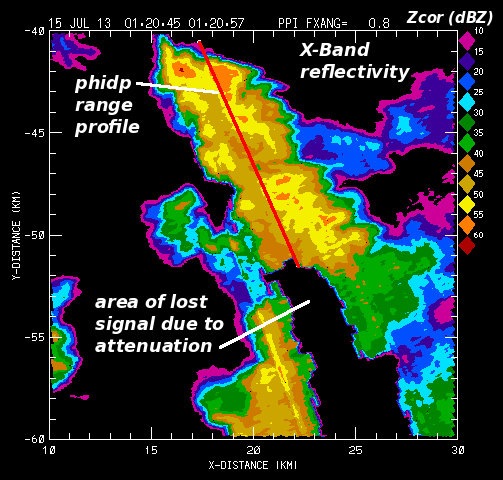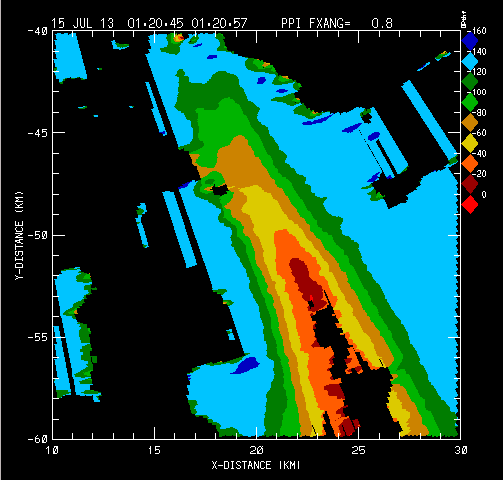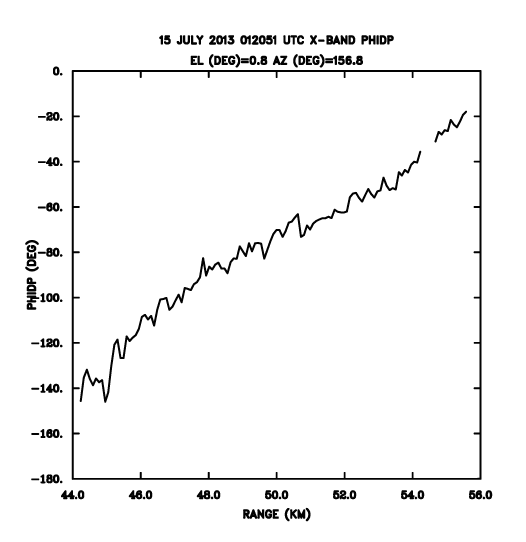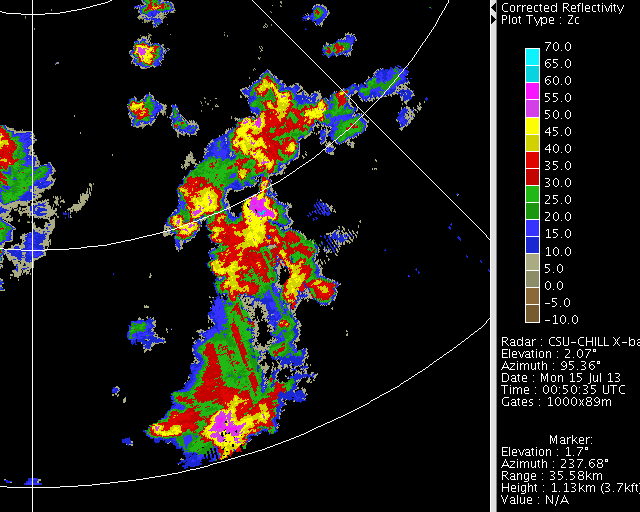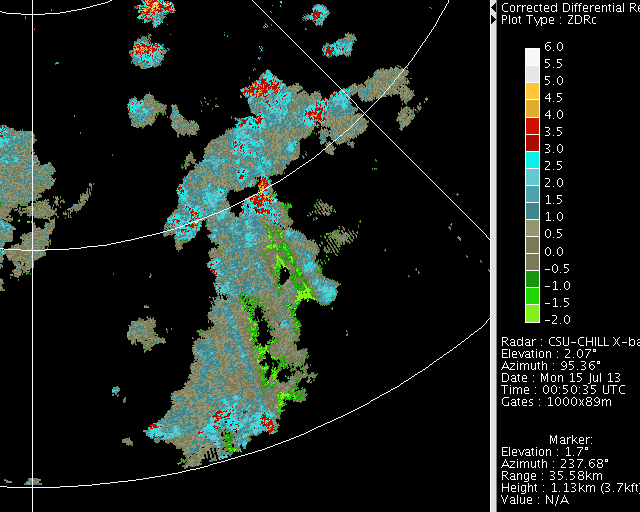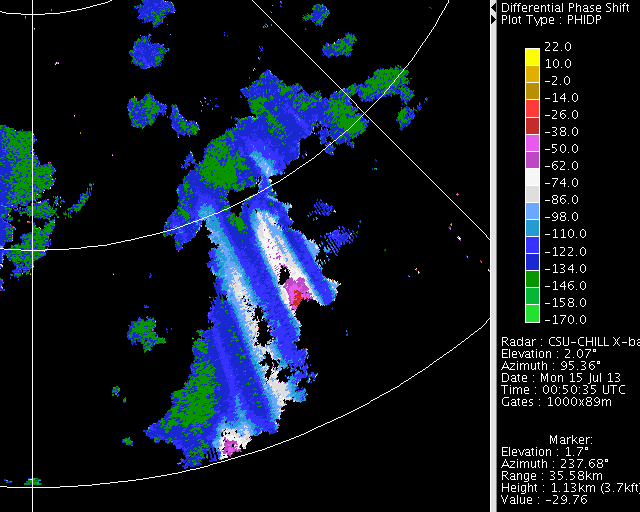Attenuation observed at 9 GHz (X-band): 15 July 2013: Difference between revisions
Pat kennedy (talk | contribs) (initial image posting) |
Pat kennedy (talk | contribs) No edit summary |
||
| Line 1: | Line 1: | ||
==Introduction== | |||
Both scattering and absorption take place when microwaves interact with atmospheric particles (i.e., gas molecules, small cloud droplets, large raindrops, etc.) These scattering and absorption processes remove some of the energy from the passing radar pulses. Echoes will disappear from the radar's view when the propagation losses along the round trip path to the target become sufficiently large. These net attenuation effects can usually be neglected at 3 GHz (S-band). At 9 GHz (X-band), the high concentrations of large raindrops that occur in heavy rain areas cause significant signal losses. While a series of low elevation angle (0.8 deg) PPI scans were being conducted with the CSU-CHILL X-band system on 15 July 2013, an episode of signal extinction due to heavy rain was observed. | |||
==Attenuation corrected reflectivity loop== | ==Attenuation corrected reflectivity loop== | ||
The following loop shows a series of X-Band reflectivity images at just over 3 minute time intervals. A basic correction for attenuation losses has been applied to the values. When the attenuation losses become large enough, the more distant echo area disappear as lost signal shadows develop down range of the high reflectivity precipitation cores. One such signal loss area is quite well defined at 0120 UTC. | |||
<center> | <center> | ||
<imgloop delay=200 imgprefix="http://www.chill.colostate.edu/anim/15jul2013_X_atten/" width=640 height=512> | <imgloop delay=200 imgprefix="http://www.chill.colostate.edu/anim/15jul2013_X_atten/" width=640 height=512> | ||
| Line 22: | Line 26: | ||
==Attenuation corrected differential reflectivity loop== | ==Attenuation corrected differential reflectivity loop== | ||
When non-spherical hydrometeors are present, the attenuation losses at horizontal and vertical polarization become different. The attenuation losses at horizontal polarization exceed those at vertical polarization when oblate rain drops are present. This differential attenuation loss induces a negative bias in the differential reflectivity (Zdr) data. The following loop shows the Zdr data with a differential attenuation correction applied. Some areas of negative Zdr still exist near the "shadow" regions. | |||
<center> | <center> | ||
<imgloop delay=200 imgprefix="http://www.chill.colostate.edu/anim/15jul2013_X_atten/" width=640 height=512> | <imgloop delay=200 imgprefix="http://www.chill.colostate.edu/anim/15jul2013_X_atten/" width=640 height=512> | ||
Revision as of 14:42, 25 July 2013
Introduction
Both scattering and absorption take place when microwaves interact with atmospheric particles (i.e., gas molecules, small cloud droplets, large raindrops, etc.) These scattering and absorption processes remove some of the energy from the passing radar pulses. Echoes will disappear from the radar's view when the propagation losses along the round trip path to the target become sufficiently large. These net attenuation effects can usually be neglected at 3 GHz (S-band). At 9 GHz (X-band), the high concentrations of large raindrops that occur in heavy rain areas cause significant signal losses. While a series of low elevation angle (0.8 deg) PPI scans were being conducted with the CSU-CHILL X-band system on 15 July 2013, an episode of signal extinction due to heavy rain was observed.
Attenuation corrected reflectivity loop
The following loop shows a series of X-Band reflectivity images at just over 3 minute time intervals. A basic correction for attenuation losses has been applied to the values. When the attenuation losses become large enough, the more distant echo area disappear as lost signal shadows develop down range of the high reflectivity precipitation cores. One such signal loss area is quite well defined at 0120 UTC.
|
|
||
|
Attenuation corrected differential reflectivity loop
When non-spherical hydrometeors are present, the attenuation losses at horizontal and vertical polarization become different. The attenuation losses at horizontal polarization exceed those at vertical polarization when oblate rain drops are present. This differential attenuation loss induces a negative bias in the differential reflectivity (Zdr) data. The following loop shows the Zdr data with a differential attenuation correction applied. Some areas of negative Zdr still exist near the "shadow" regions.
|
|
||
|
Differential propagation phase loop
|
|
||
|
